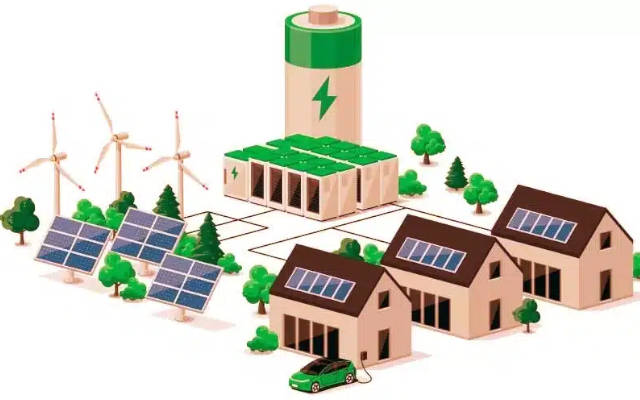Turning the Energy Crunch into a Smart Grid Revolution

Distributed energy becomes backbone of resilient power grid.
By EVWorld.com Si Editorial Team
America is not running out of energy - it is running out of time to modernize how energy is managed. As AI data centers, electrified transport, and climate volatility strain the grid, the solution is not more fossil fuel extraction. It is smarter coordination, distributed resilience, and policy that unlocks the full potential of clean energy assets already in place.
Virtual Power Plants: Software-Defined Resilience
Across the country, a quiet revolution is underway. Companies like Octopus Energy are deploying virtual power plants (VPP) - networks of rooftop solar panels, home batteries, EV chargers, and smart appliances that work together as a single, dispatchable energy resource. These systems do not require new power plants or transmission corridors. They rely on software, real-time data, and consumer participation. In Texas, Octopus has already demonstrated how VPPs can reduce peak demand and offer free electricity during off-peak hours. In Illinois, legislation is being considered to expand VPP access statewide. The model is simple: empower homes and businesses to become active grid participants, and reward them for it.
Vehicle-to-Grid: EVs as Mobile Power Banks
Electric vehicles are more than transportation - they are energy assets. With bidirectional charging, EVs can send power back to the grid during peak hours or emergencies. School districts, fleet operators, and homeowners are beginning to tap into this potential. Automakers like Ford, Nissan, and Hyundai are rolling out V2G-compatible models, and utilities are exploring how to integrate these mobile batteries into grid operations. The vision is compelling: millions of EVs parked overnight, ready to stabilize the grid when needed.
Policy Innovation: Aligning Incentives with Impact
Technology alone cannot solve the energy crunch. Policy must catch up. That means standardizing V2G protocols, streamlining interconnection for distributed energy resources, and expanding dynamic pricing models that reflect real-time grid conditions. Consumers should be rewarded for shifting their usage, storing excess solar, or discharging their EVs during peak demand. Federal and state agencies have the tools - they need the mandate. The Department of Energy already recognizes VPPs as a key solution to rising costs and grid congestion. Now is the time to scale.
From Crisis to Coordination
The energy crunch described by Climate Crisis 247 is real - but it is solvable. America has the generation capacity. What it lacks is coordination, intelligence, and investment in technologies that turn homes, vehicles, and businesses into active grid participants. Virtual power plants and vehicle-to-grid systems are not fringe ideas. They are the foundation of a resilient, equitable, and decarbonized energy future. The path forward is not about producing more - it is about using what we have smarter.
Sources
- Climate Crisis 247 - Energy Crunch Video
- Octopus Energy - VPP Launch in Texas
- U.S. DOE - Vehicle-to-Grid Integration Initiative
- Utility Dive - Illinois VPP Legislation
Original Backlink
Views: 228
Articles featured here are generated by supervised Synthetic Intelligence (AKA "Artificial Intelligence").
